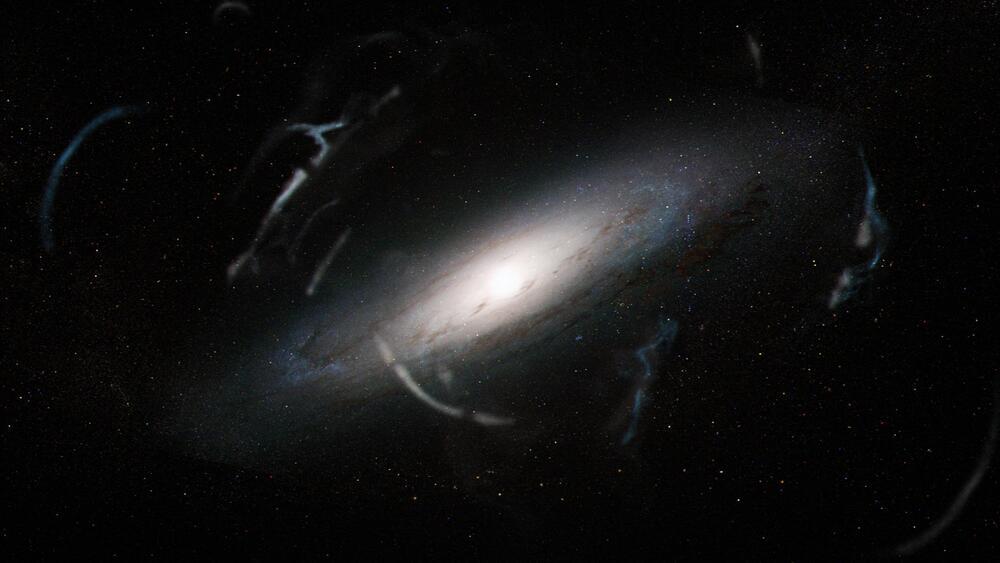Some of the finest, smallest details in the universe – the gaps between elongated groups of stars – may soon help astronomers reveal dark matter in greater detail than ever before. After NASA’s Nancy Grace Roman Space Telescope launches, by May 2027, researchers will use its images to explore what exists between looping tendrils of stars that are pulled from globular clusters. Specifically, they will focus on the tidal streams from globular clusters that orbit our neighboring Andromeda galaxy. Their aim is to pinpoint a greater number of examples of these tidal streams, examine gaps between the stars, and ideally determine concrete properties of dark matter.
Globular cluster streams are like ribbons fluttering in the cosmos, both leading and trailing the globular clusters where they originated along their orbits. Their lengths in our Milky Way galaxy vary wildly. Very short stellar streams are relatively young, while those that completely wrap around a galaxy may be almost as old as the universe. A stream that is fully wrapped around the Andromeda galaxy could be more than 300,000 light-years long but less than 3,000 light-years wide.
With Roman, astronomers will be able to search nearby galaxies for globular cluster stellar streams for the first time. Roman’s Wide Field Instrument has 18 detectors that will produce images 200 times the size of the Hubble Space Telescope’s near-infrared camera – at a slightly greater resolution.
